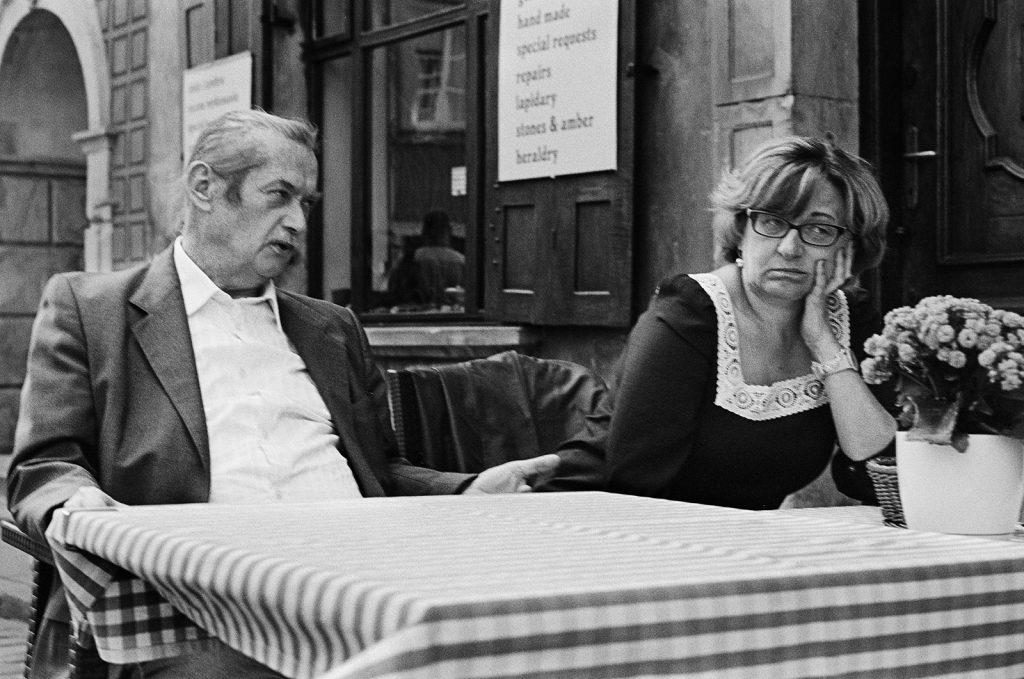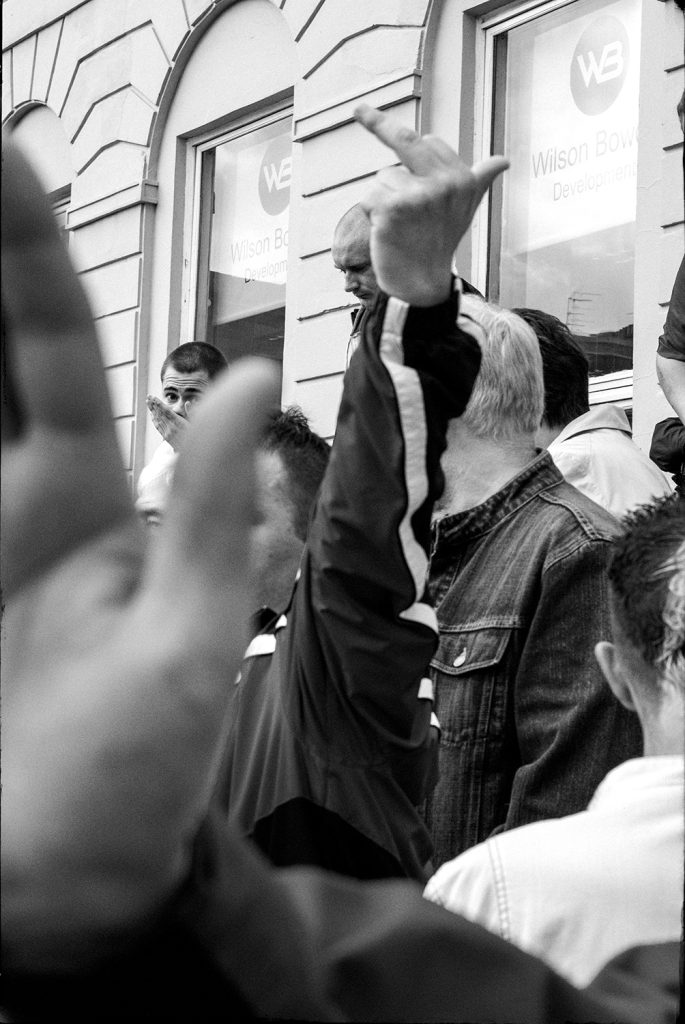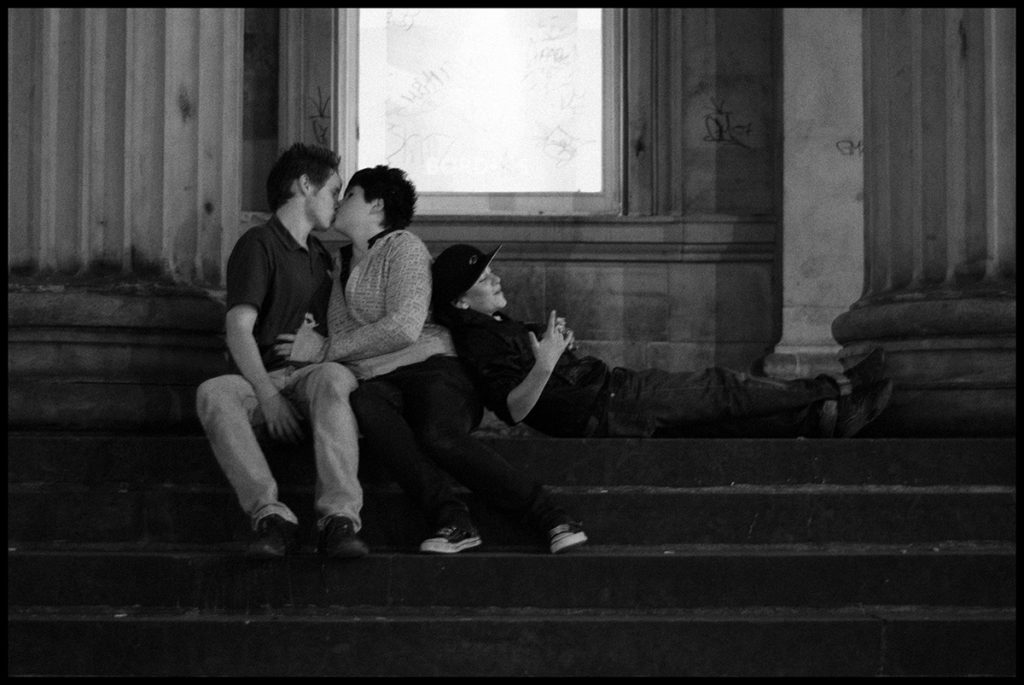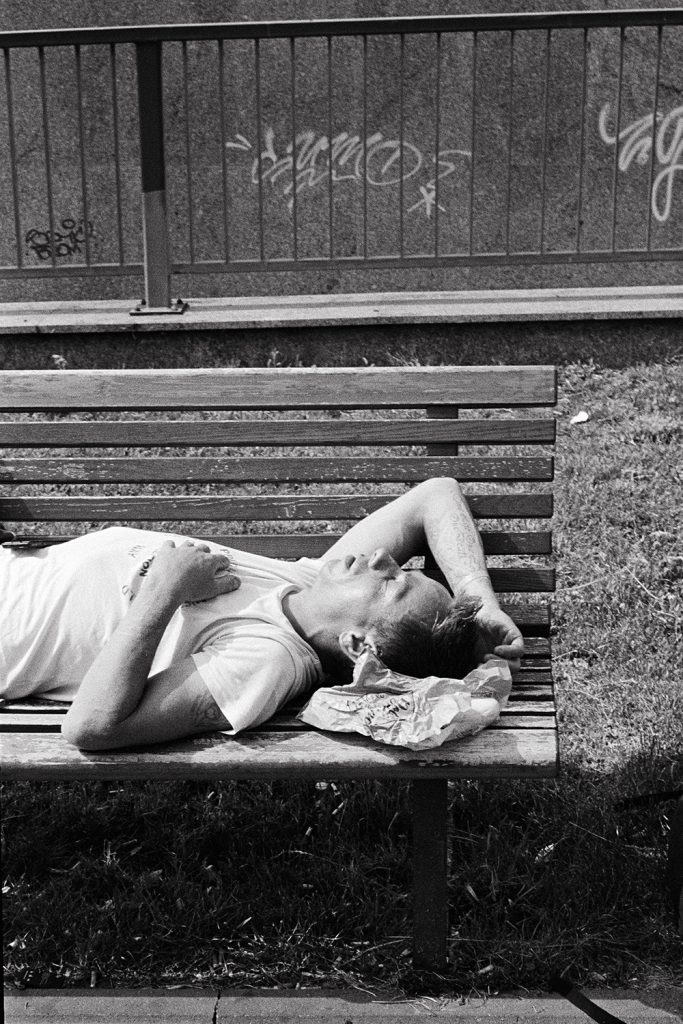Understanding what street photography is brings us, rather helpfully, to the question of why we make street photography. The words of Garry Winogrand are an appropriate place to start in answering this question: “I photograph to find out what something will look like photographed.”
I won’t presume to explain why one or any master of street photography makes their photographs. I will continue to answer with my own thoughts and motivations, some of which, universal as they are, will – I’m sure – cross over.
Learning to see

‘All the technique in the world doesn’t compensate for the inability to notice.’ – Elliott Erwitt
Of all of the skills I’ve learned, to think of myself as a street photographer, the one that continues to serve as a major impulse is to look for things that others may miss or ignore. A shadow, a look, a gesture, or a juxtaposition that – to me – whispers, says, shouts, “look at me!” To be able to turn a corner in a foreign place and see something that demands to be photographed is a gift, particularly when others may otherwise dismiss what you see as mundane. Studio photography, sports photography, landscape photography, even live music photography – which I love – has never quite offered me the same joy of noticing and recording moments that street photography does. One might even call it the thrill of the hunt.
The Two-Way Street of Interaction

Street photography encompasses a wide range of possibilities. Street photography may be photographs of animals, of inanimate objects, or of the street itself, but most often it will be of life as it happens. A street photograph will most likely contain some interaction, some small fleeting moment between people. It is often a study of life – of our relationships and human behaviours in public. Sometimes, to paraphrase Martin Parr, you might create fiction from reality, and at others, you will show the reality itself, raw and unvarnished. It is in the search for these small moments that street photography can be enticing and so satisfying. To be both entirely removed from the interaction, and at the same time – in the recording of it – be an integral part, is a fascinating and compelling reason to photograph.
The challenge of confrontation

Given my enthusiastic, talkative nature you may be forgiven for mistaking me as someone confident and assured. Instead, I am often shy and anxious, and this doesn’t stop when I pick up my camera and walk out the door. Street photography is exciting but can be a challenge. It requires courage and perseverance in the likelihood that eventually someone will confront you for taking their photograph. Much like a stand-up comedian learning to manage a heckler, finding ways, through experience, to calm a confrontation is a skill all of itself. Nevertheless, accepting the risk to get the shot regardless is a thrill in and of itself. For me, at least then, street photography is part rollercoaster, part therapy.
A Sense of Humour

A common thread that runs through much of the street photography that I love from favourites such as Erwitt, Cartier-Bresson, and Kalvar is their underlying sense of playfulness and, often wry, humour in the work. Finding irony or wit in an expression, a gesture, or a juxtaposition brings with it a tremendous sense of achievement and joy. Though a sense of humour may vary from one photographer to the next, the practice of street photography is full of endless possibility so long as that wit exists within you. Again, it all comes back to Erwitt’s implied ability “to notice” and to react.
Rock ‘n’ roll

A very subjective, and my most personal, answer to “why street photography?” is likely one that will resonate with some and not with others. Street photography is just cool. I come from a background of the DIY indie music scene and though when I began in photography I tried most things, street photography had the enigmatic, mysterious appeal of rock and roll. It seemed a gritty, life-as-it-is analog of my experiences of the DIY aesthetic in music. we mention street photographers like Cartier-Bresson, Winogrand, Erwitt, and Gilden in reverential tones, similar to the way musicians might talk of Lennon, Hendrix, Cobain, and Page. As incredible as some landscape, or studio portrait photography is – and it is – it has not yet sparked the same excitement and fascination in me as does being out on the streets.
This is the 2nd part of the 5 Ws of Street Photography where I write about the What, the Why, the Where, the Who, and the When of street photography. You can read the others here.